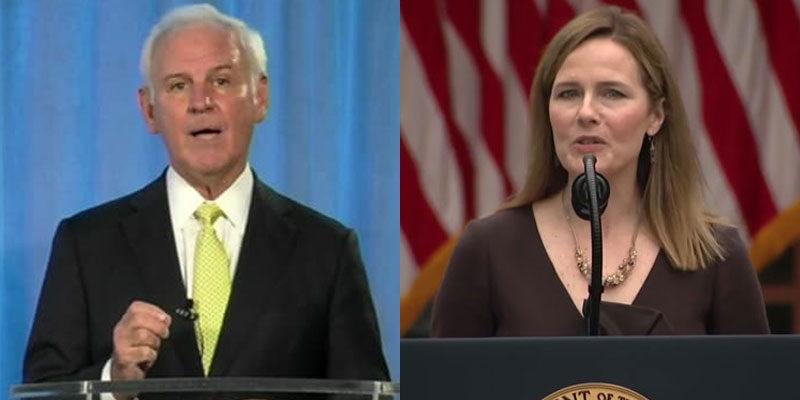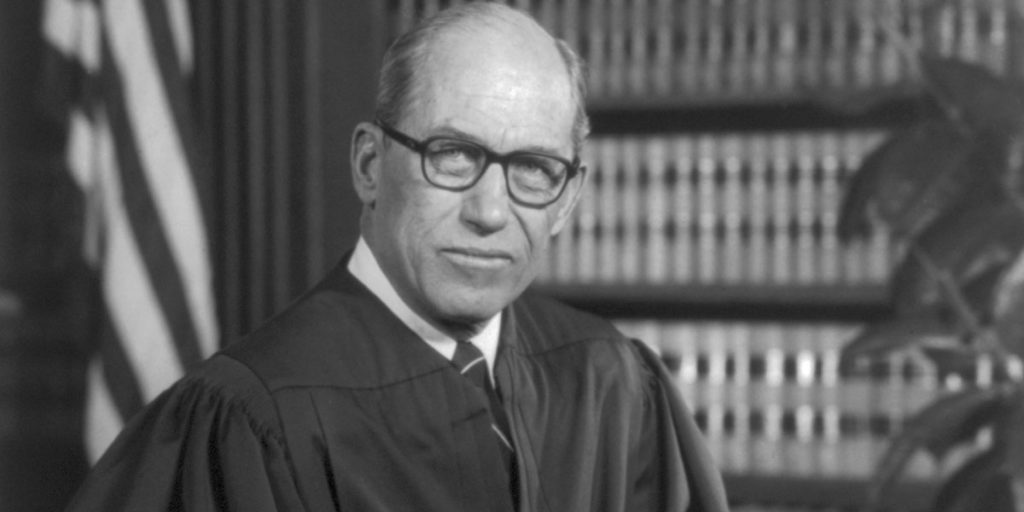On the Friday night after Hurricane Sally passed, while many of us down here were still digging out and cleaning up and without electrical power, U.S. Supreme Court Justice Ruth Bader Ginsburg died. As an attorney, Justice Ginsburg was a leading advocate for women’s rights and gender equality. She was placed on the powerful U.S. Court of Appeals for the District of Columbia by President Jimmy Carter in 1980 and on the Supreme Court as its first Jewish woman by President Bill Clinton in 1993. Though small in physical stature, she became a liberal giant on the Court particularly with her dissenting opinions. In her later years, she became a cultural icon.
Immediately, the liberal mainstream media and Democrat senators demanded that President Trump wait to name a successor, insisting that whoever is elected president this fall should make that decision, obviously hoping that president will be Joe Biden. The irony is that they had nothing but good things to say about President Obama’s nomination of Merrick Garland to take Justice Antonin Scalia’s place in the last year of the Obama-Biden administration and pushed the Republican Senate majority to confirm him prior to the presidential election that year.
Article II of the Constitution clearly states that the president has the power to nominate “Judges of the Supreme Court” with “the Advice and Consent of the Senate.” There is no question President Trump has the power to nominate Justice Ginsburg’s successor, and there is no question the Senate has to consent to the appointment, a process which typically involves the Judiciary Committee holding hearings and then a vote to advance the appointee to the Senate floor for a final vote. In over half of the nominations to the Supreme Court in the history of our country, the time period between nomination and the final vote on confirmation has been 45 days or less. For Judge Ginsburg, it was 44 days. Until after World War II, some of our most illustrious justices were confirmed in a matter of just days.
This past Saturday, President Trump nominated Judge Amy Coney Barrett of the 7th U.S. Circuit Court of Appeals to replace Justice Ginsburg. A former law professor at the University of Notre Dame who specialized in Constitutional law and statutory interpretation and was named “Distinguished Professor of the Year” three times, Judge Barrett has impeccable credentials to serve on the Supreme Court. So, why is the mainstream media and all Democrat senators, including our own Doug Jones, so indignant that President Trump would nominate and the Senate timely consider her for confirmation?
First of all, she’s a Trump appointee, and the left has gone crazy that he’s already appointed two Supreme Court justices and over 200 circuit and district court judges, all young and all with strong conservative bona fides, thus remaking the Federal judiciary and the course of the law for a generation. Judge Barrett would make a previously close 5-4 Supreme Court a stronger conservative 6-3 court. That’s truly a big deal. And the left is particularly offended by the fact Judge Barrett is a woman – a strong, smart, accomplished woman who doesn’t follow the leftist line.
Second, she has a strong faith and isn’t bashful about living that faith. A Roman Catholic, she has traditional personal views on many issues, including abortion. She and her husband have seven children, two adopted from Haiti and another with Down syndrome. During her confirmation hearing for her present position, she was attacked because of her faith. Senator Dianne Feinstein of California said to Judge Barrett, “the dogma lives loudly within you, and that’s a concern.” Since when has faith been belittled to “dogma” and since when has being a Catholic been “a concern?” I thought we left that behind when John F. Kennedy was elected in 1960. The attacks on her faith are of even more concern because Article VI of the Constitution prohibits the use of a religious test for any public office, and the First Amendment protects everyone’s right to freely “exercise” their faith. And Judge Barrett has repeatedly made the distinction between her beliefs and her obligation as a judge to follow the law.
Third, Judge Barrett is an originalist in her approach to interpreting the Constitution and laws passed by Congress. That means she interprets the words according to the way they would have been meant at the time the Constitutional provision or statute was passed. Otherwise, the court is placing its own or modern society’s understanding on the words, in effect judicially amending the law. The Constitution has provisions for amending it, but those don’t include the courts doing so, and only Congress can amend its laws. The left wants to get around the difficulty of the amendment process by allowing judges, typically very liberal judges, to interpret the law as they like, thus expanding government far beyond the intent of those who wrote and ratified the Constitution and its amendments, and far beyond what Congress intended in passing its laws.
President Trump has the clear constitutional power to make this nomination, and history is a clear guide that, even in a presidential election year, a nominee can be confirmed in a matter of weeks, even days. He has nominated an outstanding, well-credentialed circuit judge for the position, and she should get a thorough vetting but not a delayed vote on the floor of the Senate. I’m looking forward to Judge Barrett’s service on the Supreme Court.
U.S. Rep. Bradley Byrne is a Republican from Fairhope.













